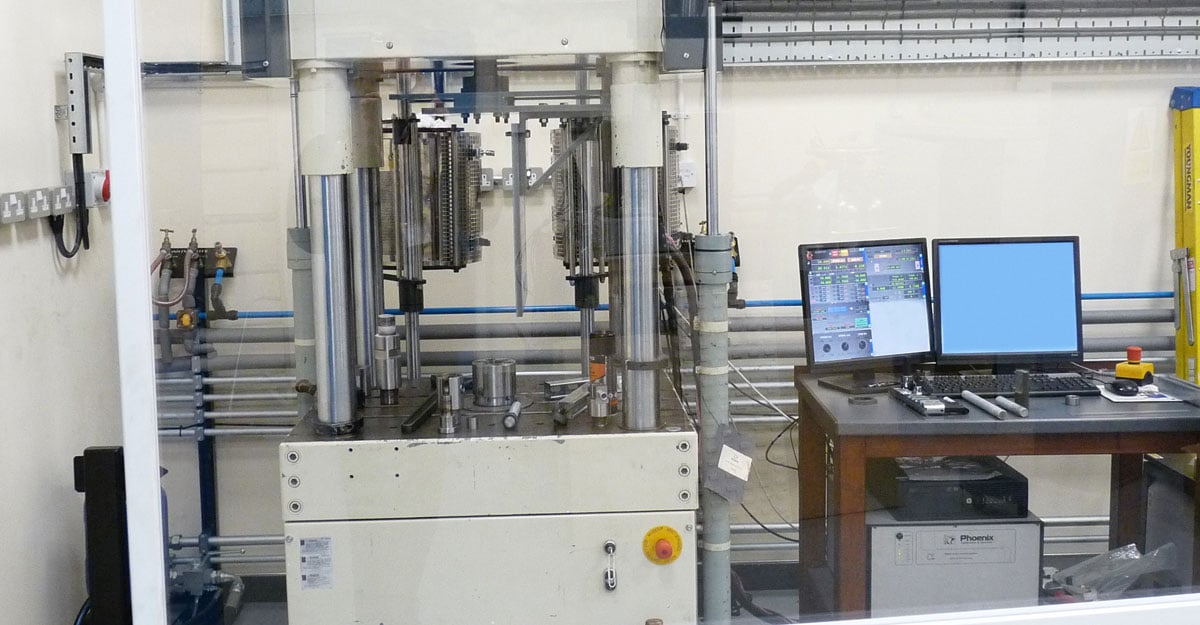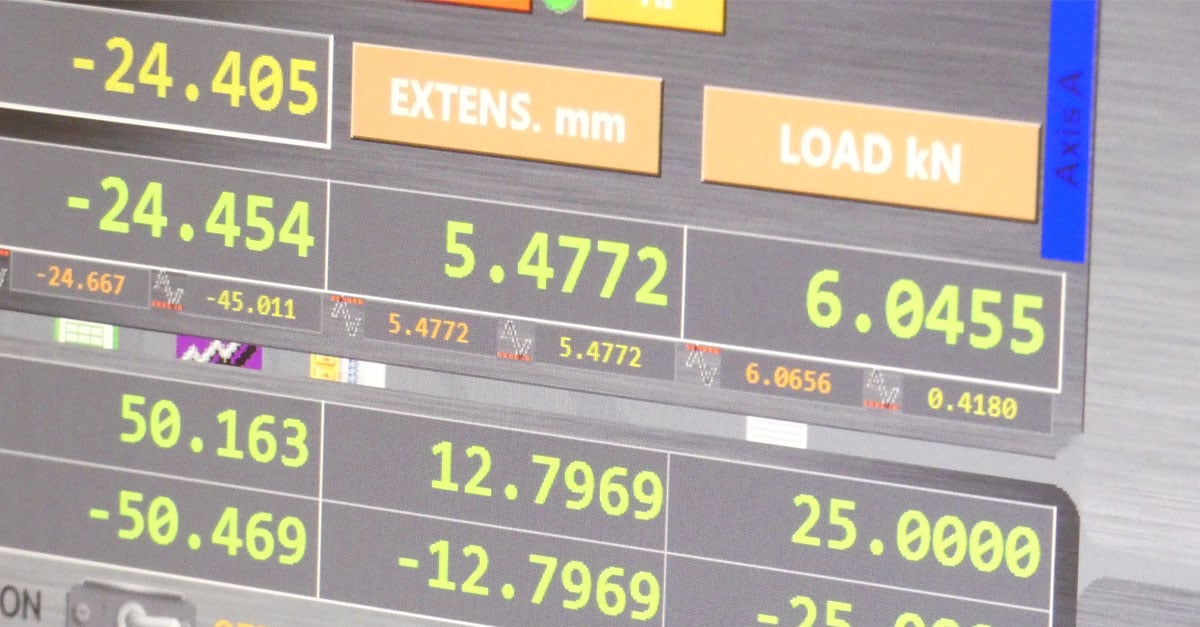Tested channel systems – you may have heard of them as a system that makes headway towards a safer future in construction, focused on compliant installations, testing, evidence and system identification.
You might’ve even heard them being called revolutionary, ‘the way forward’, the new standard, etc. But why?! That must be an exaggeration, right? Everything you’re doing now is working, so are they really that necessary? Well, I suggest you keep reading and decide that for yourself. This article will cover:
- What is a tested channel system?
- Where has the demand for tested channel systems come from?
- Why would I need a tested channel system?
- What is wrong with just using the manufacturer’s data as proof?
- Do I really need a tested channel system if I can just over-engineer?
- What if I don’t specify a tested channel system?
- What type of training would I need?
- What is the sector saying about it?
- Conclusion
What is a tested channel system?
A tested channel system, or evidence-based solutions, is a thoroughly tested support system that helps the specifier and contractor to ensure that the supports they've built are fit for purpose and can safely withstand the loads they're being put under.
For a tested channel system to be effective, it must have a few key components. The first is, of course, that it must be comprehensively tested. An independent test facility would do this – not just the testing of individual components, as an assembly of component connections in a variety of common configurations. These tests would yield thorough and reliable load data, which would be essential to engineers building supports and validating the integrity of an installation and proven performance.

The second is that it needs to be identifiable and hence, proven to work as a system – in other words, each component needs to be marked with the manufacturer’s name or logo. Having the ability to trace back where the system came from indicates that this group of components are part of the same system, have been tested together and work together safely, allowing you to verify that you’ve done everything correctly.
Where has the demand for tested channel systems come from?
There have been increasing efforts recently in the construction industry to instigate more reviews, recommendations, and regulations that encourage consciousness of safety and compliance at work.
A big stride towards this that has made the most impact is the 2018 report by Dame Judith Hackitt called “Building a Safer Future: Independent Review of Building Regulations and Fire Safety”, which came into fruition after the 2017 Grenfell tower fire. In her report, Hackitt recommended the introduction of a ‘golden thread’ i.e. “the information that allows you to understand a building and the steps needed to keep both the building and the people safe, now and in the future”, as defined by the Building Regulations Advisory Committee (GOV.uk, 2021).
The goal is to keep information about the building accurate, easily understood and accessible, to ensure the building’s safety. It’s resulted in industry practices across all areas, not just the direct problem i.e. fire safety, being subjected to intense scrutiny and rethinking. Tier 1 contractors are compelled to ask whether supports are fit for purpose or not. As a result, it’s now becoming customary within all sectors of construction to demonstrate how they’re ensuring their buildings meet the required standards for ongoing safety.

Why would I need a tested channel system?
Many of these decades-old practices in M&E are clearly problematic; for example, building services supports are frequently installed by using components in conjunction with other components from different sources, without proving their combined performance. The ‘Building Engineering Services Association (BESA) – Guide to Good Practice for ‘Supports and Fixings’ TR50’ emphasises this point. This is where the need for change, particularly evidence-based installations, becomes apparent. And that’s where you come in – you need to be able to answer ‘YES!!!’ when asked: “when challenged can you demonstrate that the structure you have installed can take the load applied to it and that the supports and fixings are fit for purpose?”

What is wrong with just using the manufacturer’s data as proof?
Do not rely on individual manufacturers’ performance data - most of the time this load data does not reflect the final installation and it is not comprehensive enough.
You may be able to prove one element of a design, but not the whole bracket structure – which you need to! You wouldn’t have the data for the connection. That’s where fully tested systems come in. If they are employed and installed correctly, this issue is resolved.
Another point is, that other manufacturers’ channel products nearly always use calculated data based on material performance, and that means that it is a desktop calculation as opposed to a physical application-based laboratory test. This is also eliminated with tested channel systems, thanks to the calculated data that is corroborated by extensive physical testing.
For these reasons, the manufacturers’ data is not enough to prove that your supports are fit for purpose.
Do I really need a tested channel system if I can just over-engineer?
What often happens is designers deliberately use oversized and over-specced materials and components in the bracket assembly to give themselves assurance that there won’t be a failure. Whilst eliminating failure is always a good thing, the point we’re reiterating is that it’s about evidence and not failure – over-engineering doesn’t give you evidence.
Not only that but there is always an ‘apex point’ during which you achieve the desired result with the least amount of money. Past that point, spending any more money is redundant and wasteful, and using these additional components wouldn’t actually help achieve optimal results.
What if I don’t specify a tested channel system?
Tested channel systems would solve numerous problems that currently exist in the sector. If you don’t specify one, these problems will still be yours to deal with!
Without testing the components together, there’s no way to know for sure whether or not the system can handle the load and would be fully functioning. Most installs are based on judgment rather than science. This of course results in much higher risks of not just failure, but injury or even death. Even if you have all the required data for a specific component, such as the point load or UDL of channel, this becomes futile the second you bring in a new component. Whereas, with a comprehensive, tested system of branded components, there’s no question of its integrity.

Something that happens too often and is potentially dangerous, is when site teams are tasked with designing solutions solely based on their prior experience without the most basic design considerations. Using a tested channel system verifies the design load of the supports and ensures that the parts used for the design are employed in the final product. The engineering drawings and reports will also enable you to document the design process, demonstrating that the brackets are capable of supporting the loads. Furthermore, even if the majority of people in the sector do everything correctly during planning and installation (which is unlikely), the lack of evidence once again deems it useless. What good is it if you’ve done your job diligently, but have no proof?
What type of training would I need?
All fully tested systems require adherence to building parameters. So, no matter how long you have been building brackets, you will need training for an installation.
Tested channel systems are to be backed up by a warranty; essentially, a document that certifies that the products used are correct and part of a system, installed as per the specification, and the installer has been competently trained. The exclusion of any one of these requirements makes the warranty null and void.

A training program could either be face-to-face in a classroom/workshop environment or online/digital, provided the installer comes away with certification that demonstrates competent training. An example of something you must be trained to do is to correctly use a calibrated torque wrench to tighten the nuts to connect the channel with other components (channel accessories, e.g. channel plates, anchors, etc.)
Once you employ a fully tested channel and bracketry system, along with proof of the installers’ training, you then have the evidence to answer the initial question with “yes, we can prove our installation”. Job done!
What is the sector saying about this?
Under a recent post on a social channel by Steven Grkinic, our Head of Sales and technical expert, people in the industry have shared their opinions on tested channel systems.
James Rodwell, BMS (building management system) Supervisor, said: “We definitely need more awareness of this on site… This sort of learning should be included in applying for trades cards, [and] mandatory on site. Definitely needs a big push to mainstream construction. Why isn’t this part of college courses and apprenticeships?”
Resident Engineer at Confidential, said: “Catalogue ‘engineering’ is just that and not evidence of anything,” i.e. if you’re using load data from the manufacturer (taken from a catalogue), it’s not enough!
Meanwhile, others were a bit more reluctant toward the concept. Kieran Barker, an MCIOB Chartered Construction Manager, contributed: “Not sure on the tested bit, but from experience, certainly designed and assurance is a direction I have seen in more recent times”.
Our Key Account Manager here at MIDFIX, Andrew White, also said his piece: “I hear this often on projects: ‘Will this be OK? Can you confirm that this will take the weight? Can you come to site and verify the installation?’,”
“Early engagement is absolutely key. A tested install and trained installer equal evidence, certainty and peace of mind.”
While there are many hurdles to overcome first, it seems like tested channel systems may truly become increasingly more standardised over time as they solve many common problems in the industry.

Conclusion
If we’re really moving towards higher safety standards, design verification, compliance, and evidence, these systems will make the process much easier. They automatically come with reliable data of all the products used, as well as proof that the products specified by the engineer are the same ones on site. Moreover, they allow supports, anchors, and any other components to be considered a single-source solution and complete system that can take the load.
It’s up to you to decide whether tested channel systems are necessary for your installations and not just a convenient bonus. But if nothing else, I hope this article has at least given you an idea of why they’re important and how much of a difference they can actually make in the industry.



